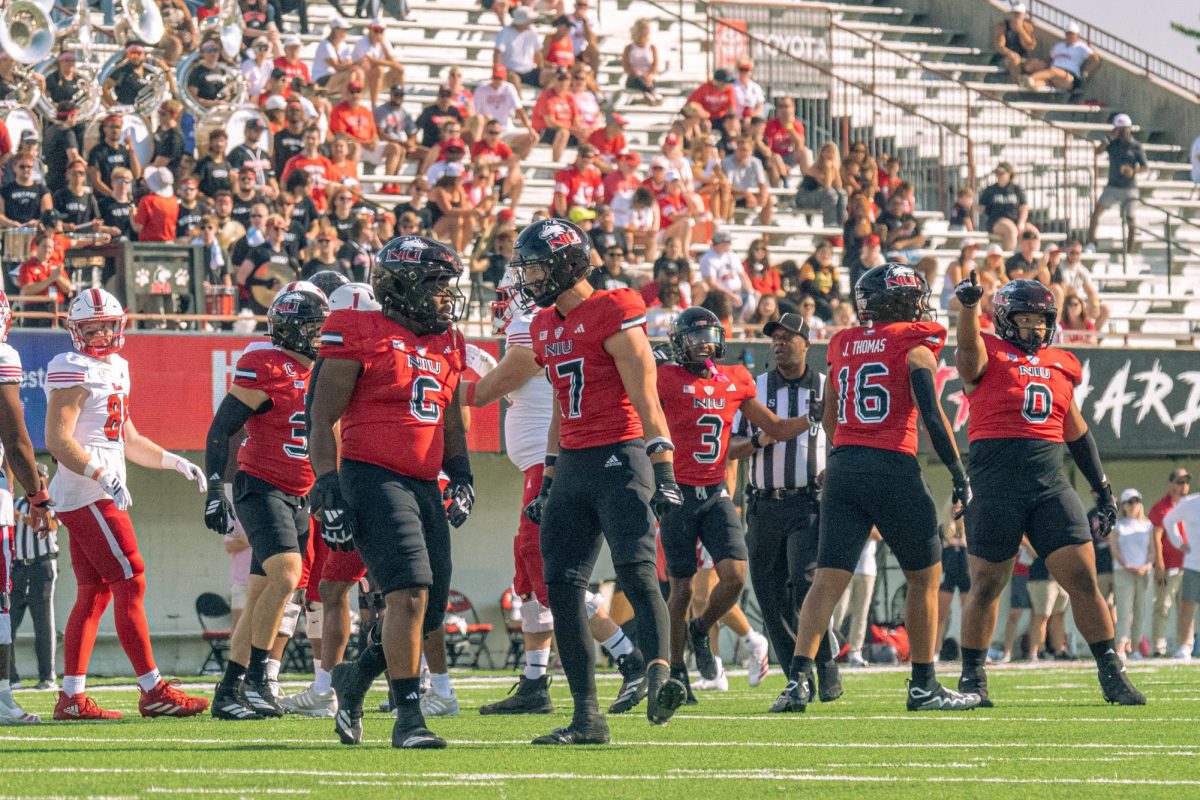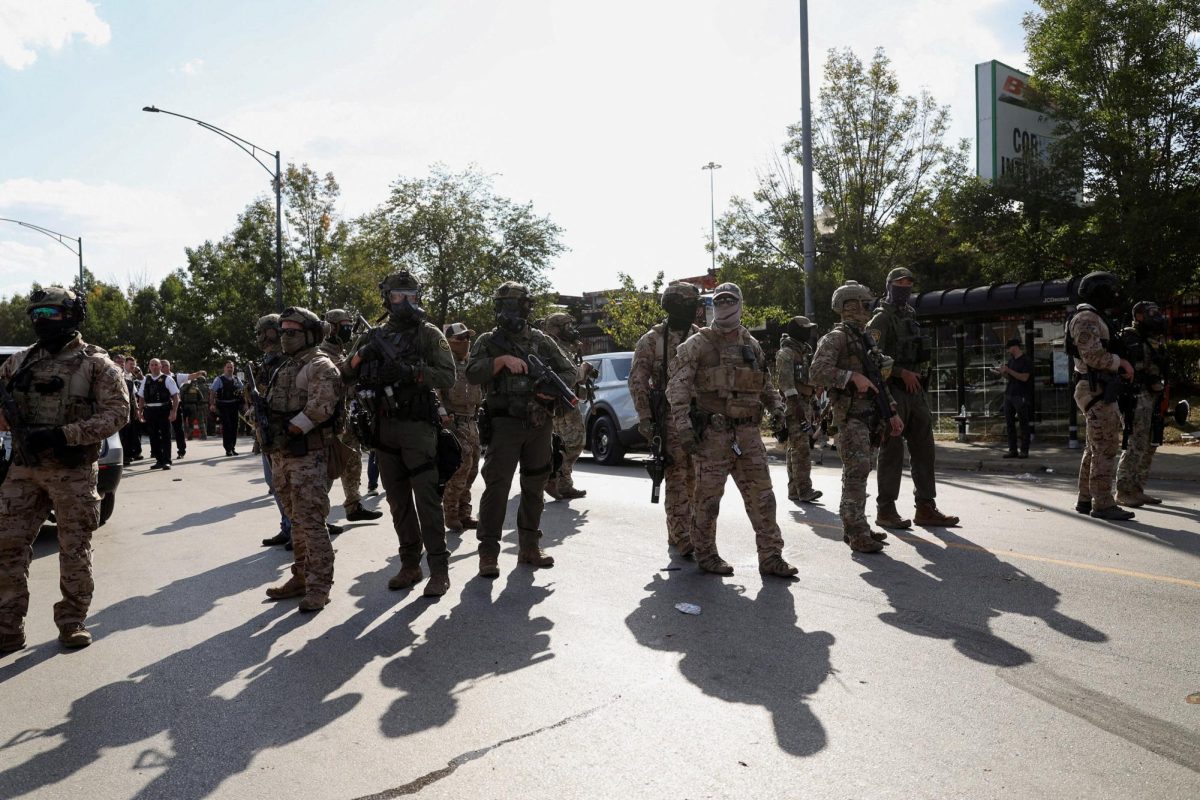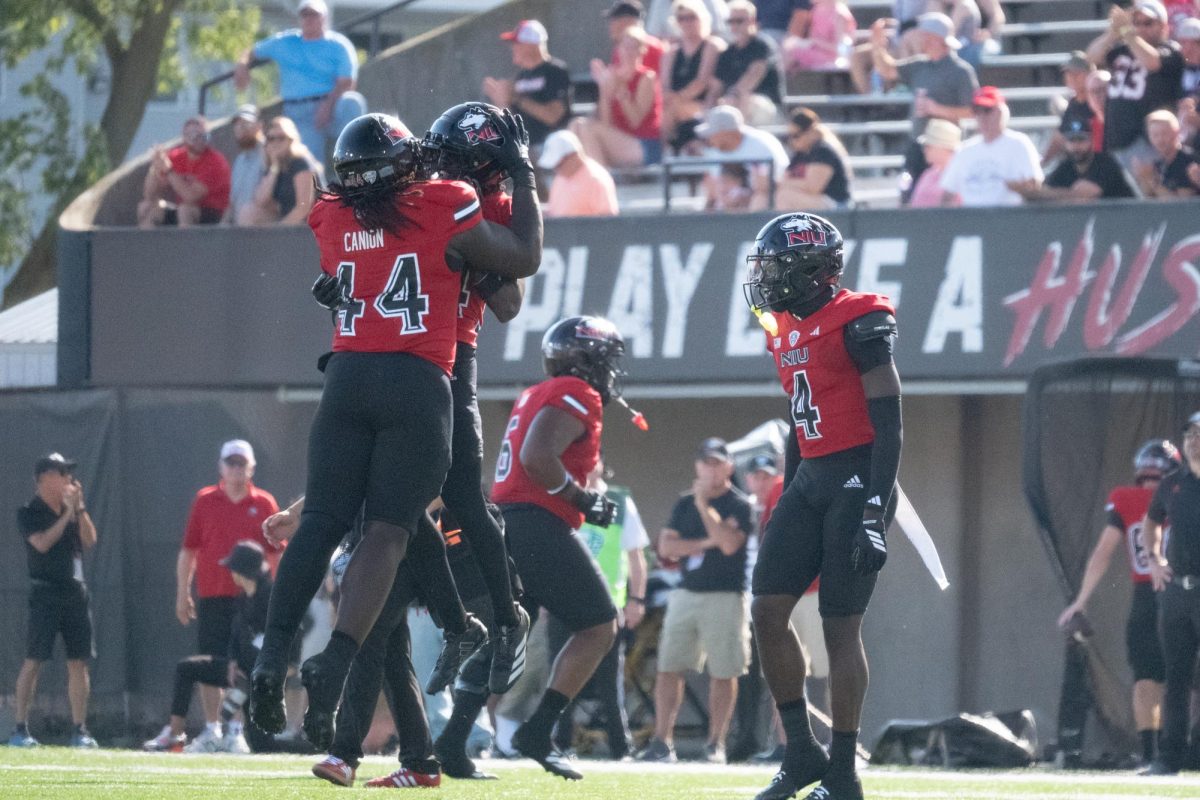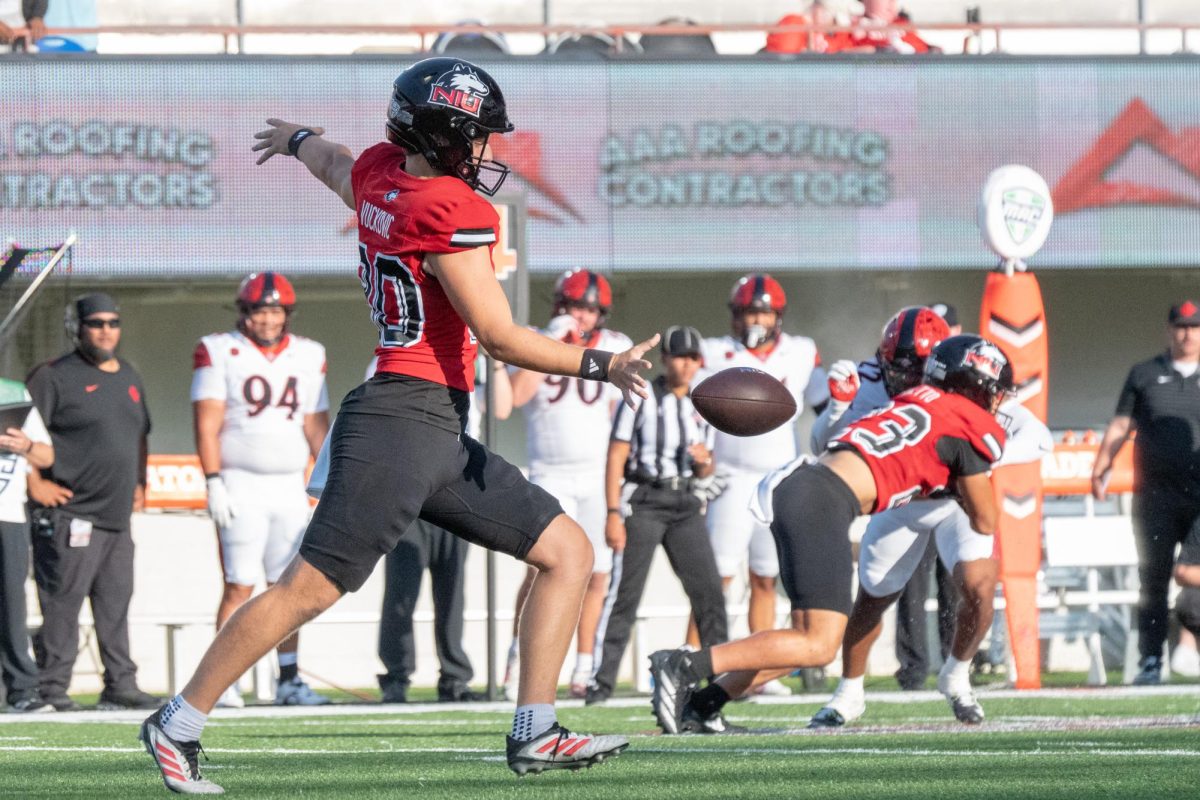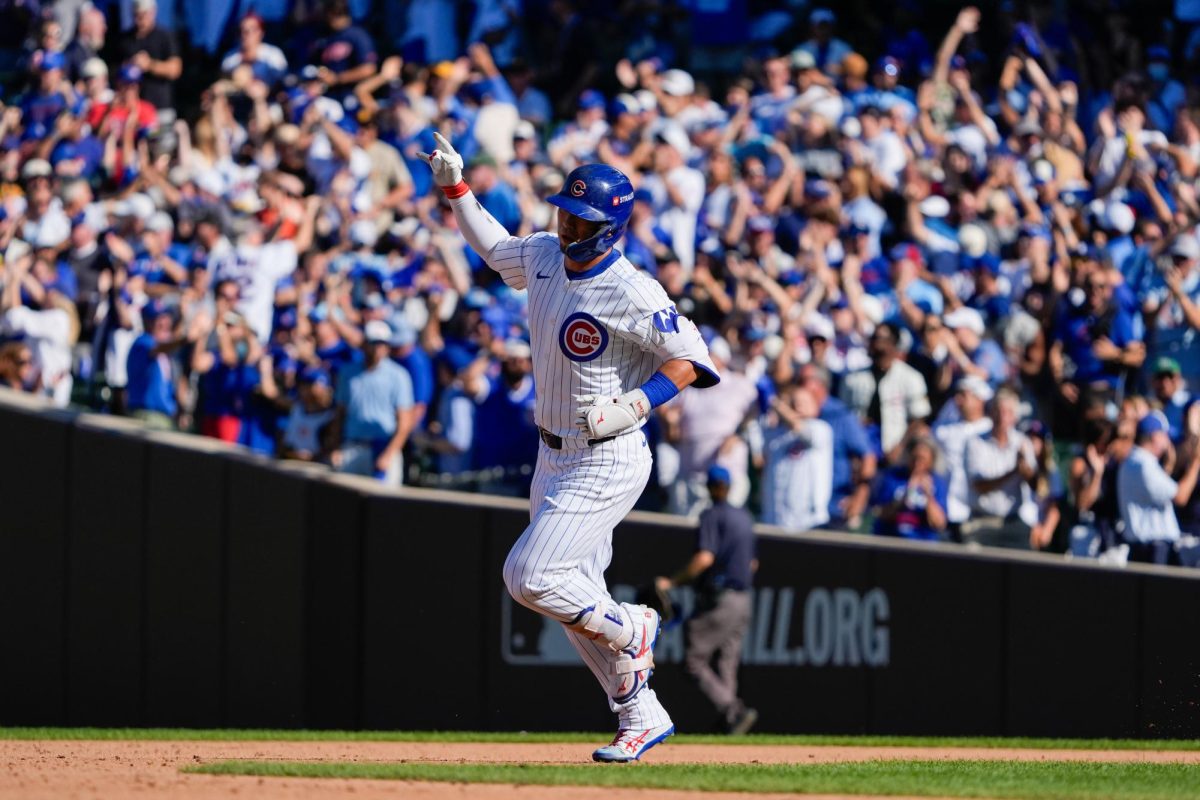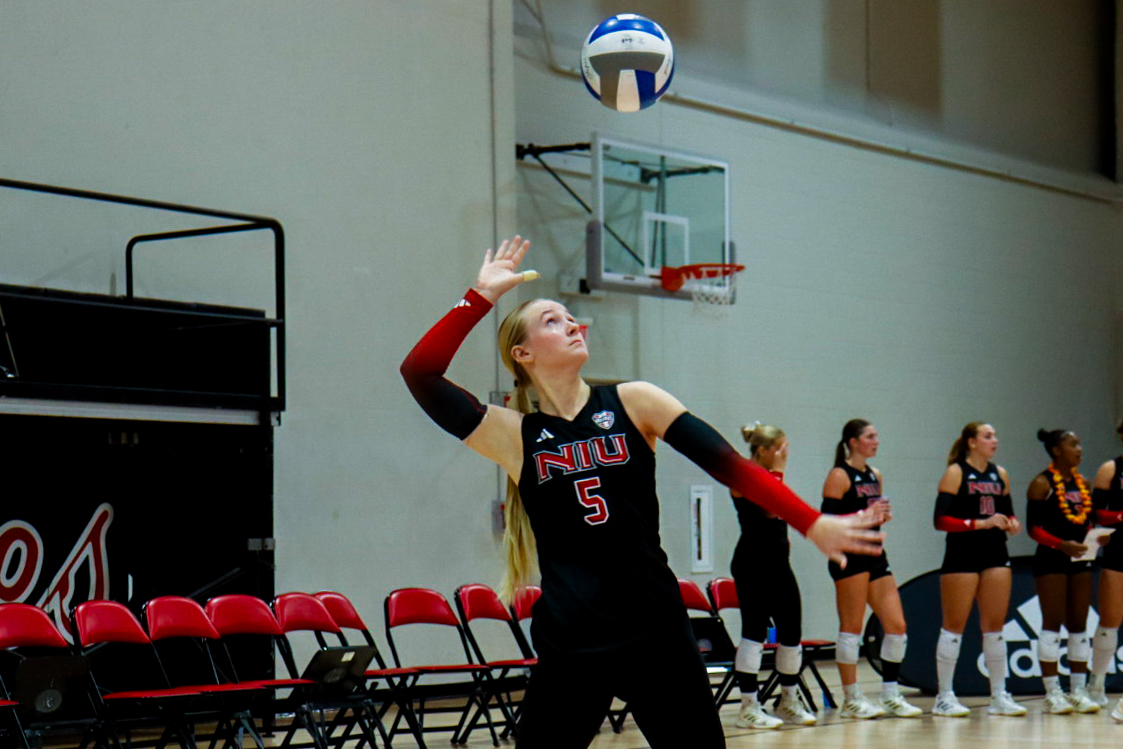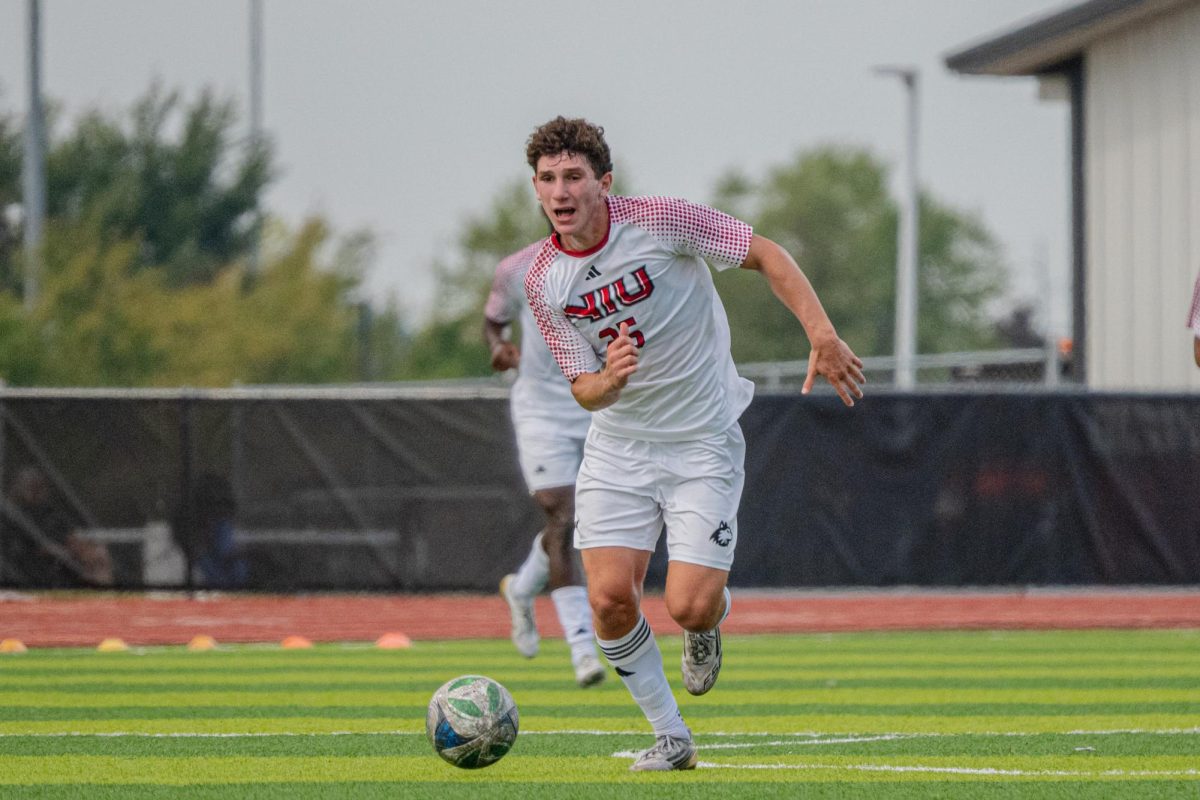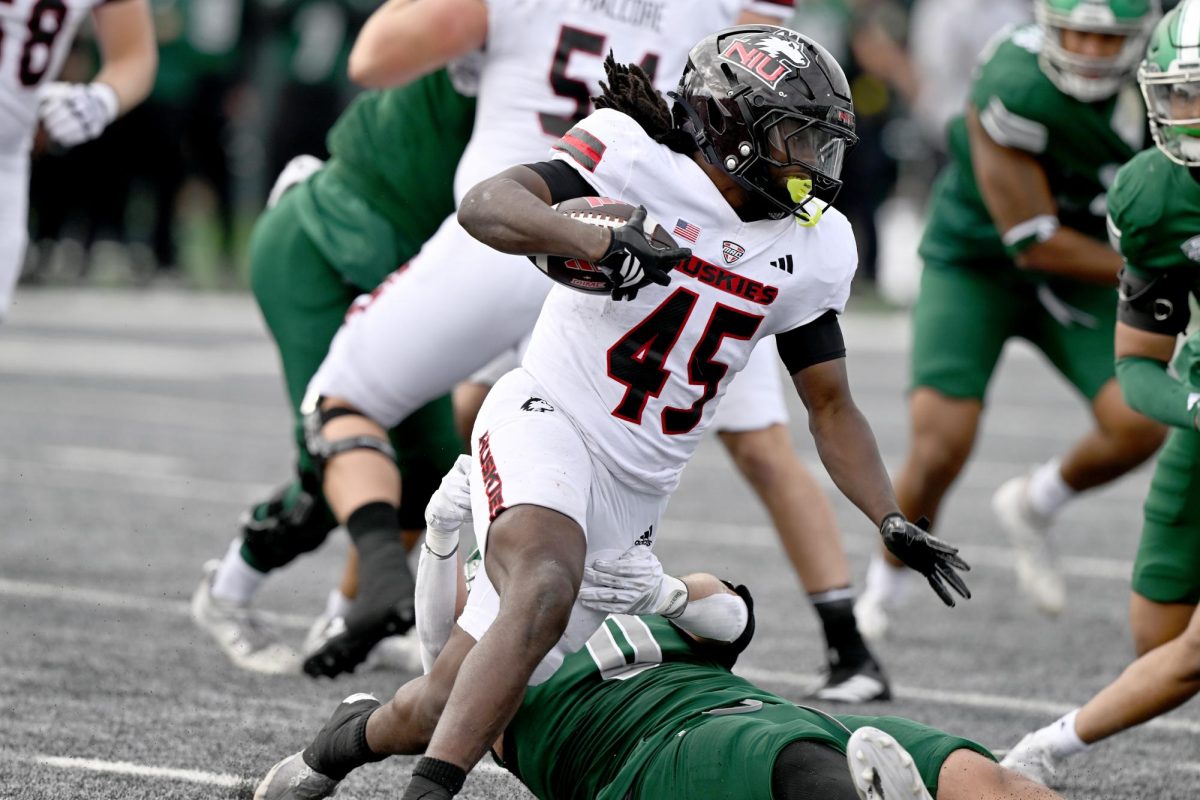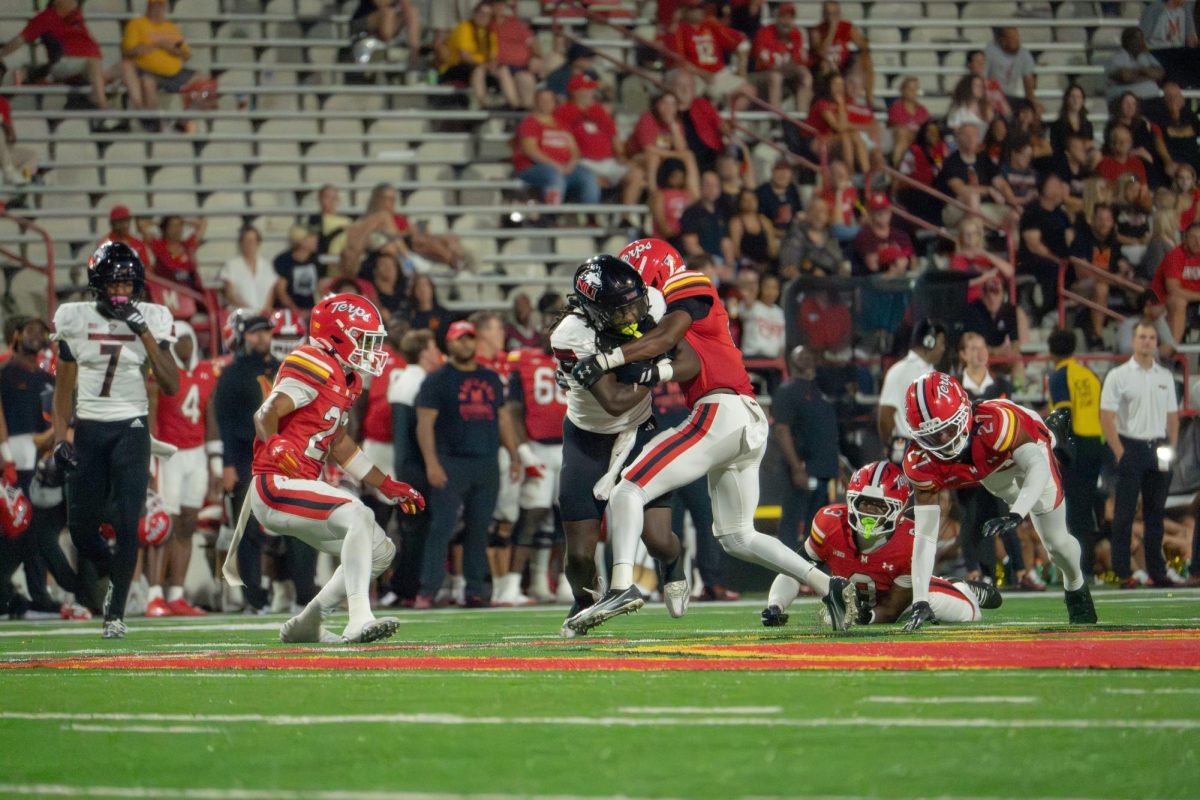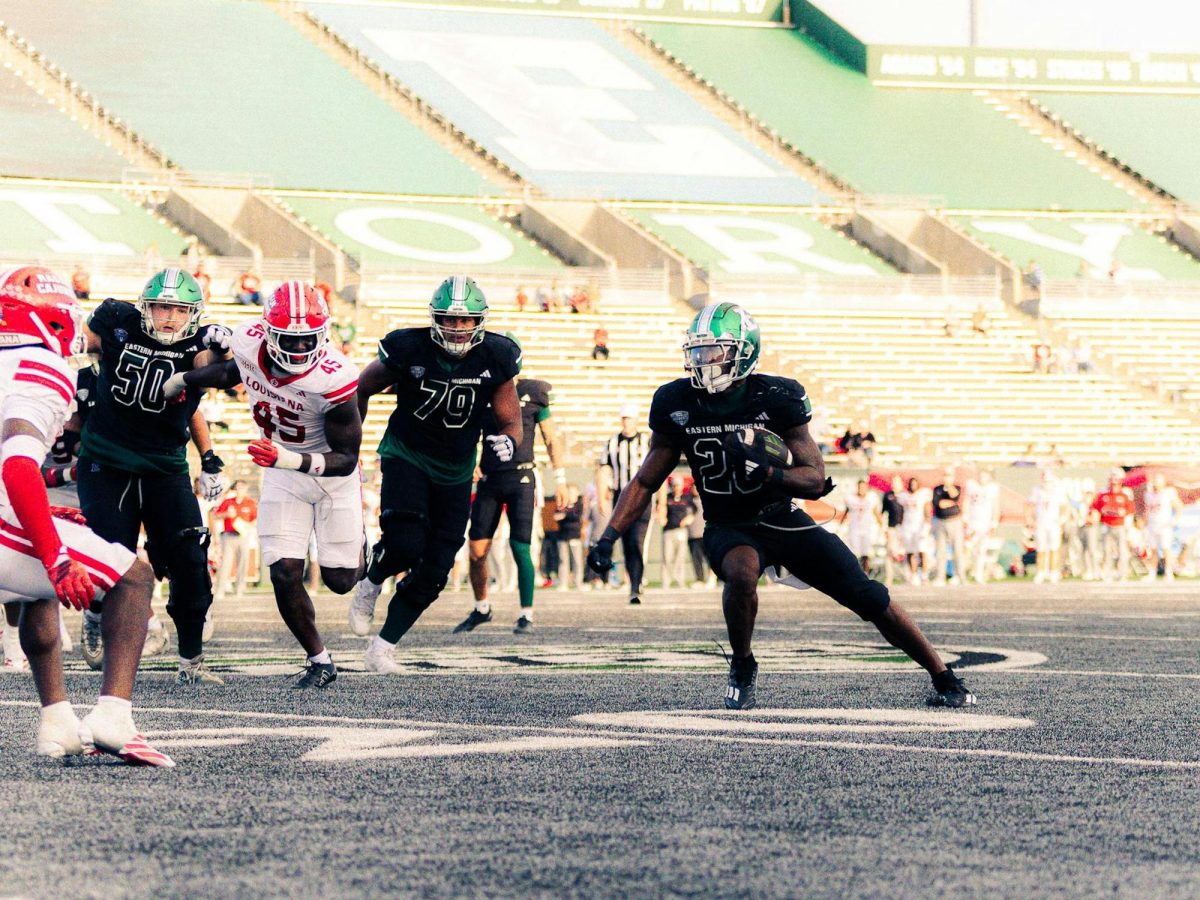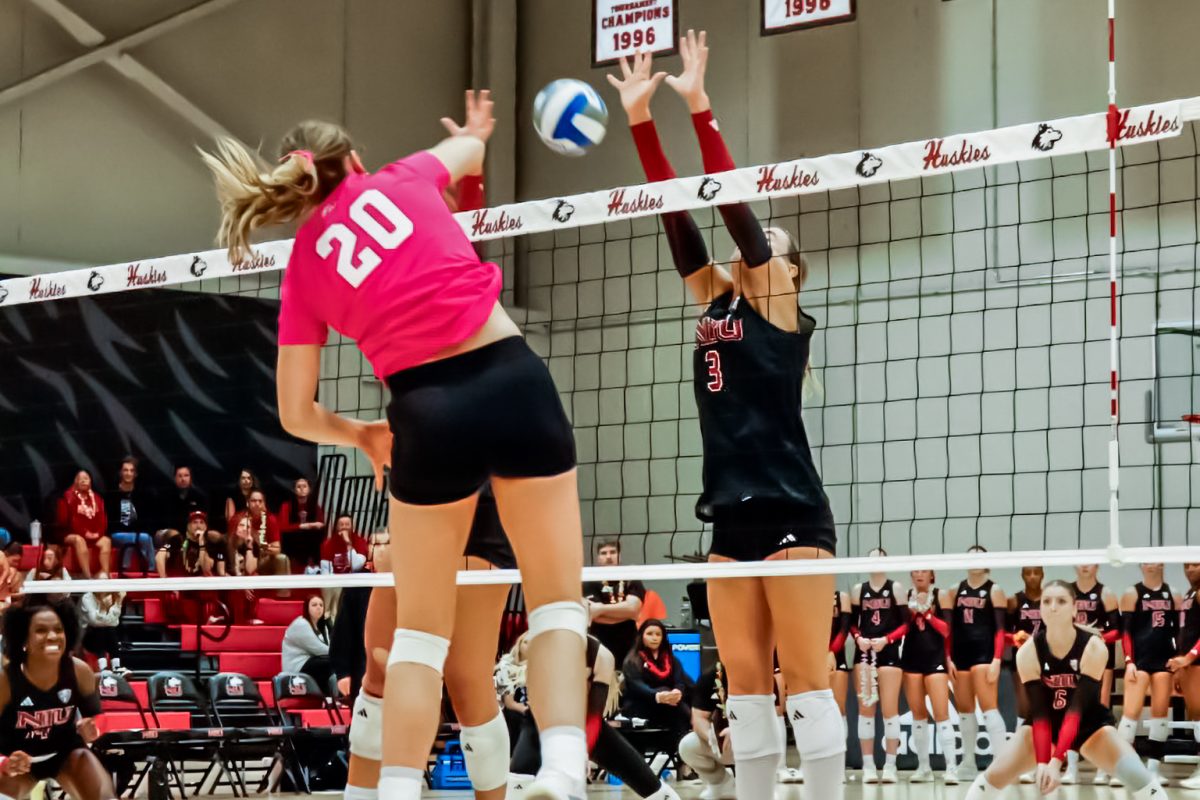Football is a barbaric sport built on toughness, but at what cost?
Introduced to National Football League fans in 2020 and implemented in 2024, Guardian Caps have become a polarizing topic among spectators. While some fans believe the caps are ruining the sport, others remain indifferent.
With an increase in head-related injuries caused by football, spectators should care less about helmet aesthetics and more about safety.
After spending over 10 years playing competitive football as an offensive lineman, I suffered multiple concussions. If I had been wearing a protective cover over my helmet, I probably would have avoided the issue.
Guardian Caps are a form of protective helmet covers used to battle health risks associated with playing tackle football. NIU also uses a protective cover in practices, with the option for players to use them in-game.
While the NFL uses Guardian Caps, NIU uses SAFR Helmet Covers – a more discreet option.
These protective covers are used to prevent severe head injuries, a common side effect of any length of football career. Despite the plethora of benefits, a small portion of athletes actually use them.
With the risk of head injuries associated with playing competitive football, it makes you question why players take them off come game day.
Former Huskie offensive lineman Logan Zschernitz – who has started 33 career games for NIU – is one of two Huskies that regularly used the “SAFR” covers this season.
“In [the spring 2023 semester], NIU introduced them, and we started using them in practice,” Zschernitz said. “Everybody had mixed opinions on it, but when they put them on the helmet, you could barely tell that they were on there. But I just knew that it felt better to me when I had it on versus when I had it off.”
According to Zschernitz, NIU football players wear the covers daily at practice. But, come gametime, the covers are nowhere to be found.
“We practice with it every day,” Zschernitz said. “So in my head, I was like, ‘Why would I wear this Monday through Friday and then just take it off for Saturday?’”
Despite not using the SAFR brand, the use of “Guardian Caps” in the NFL began this season, leading to an overwhelmingly negative reaction from football fans.
Zschernitz commented on how the negative discourse extended to NIU.
“I think it was the first three games that we played,” Zschernitz said in regard to opposing teams critiquing the protective cover. “I was smack talked about it, and then there [were] a couple random ones in there, but, yeah, I definitely got told some stuff about my cap.”
Zschernitz received slack even though the SAFR caps are nearly indistinguishable to a normal helmet and are far less bulky than Guardian Caps. Additionally, wearing one reduces the risk of injury, making the criticism they receive even more puzzling.

With the rise in head-related injuries in the past few years, I am confused why people don’t want to see their favorite players play longer and be safer.
According to the NFL, 91 players faced a concussion throughout the 2017 season – three years before the implementation of Guardian Caps in practices. Flash forward to 2023 – three years after the implementation of the caps – the number of concussions faced dropped to 44.
Furthermore, according to Boston University’s CTE Center, over 300 former NFL players have been diagnosed with chronic traumatic encephalopathy (CTE). Although CTE is an extreme and rare disease, it remains a possibility.
CTE is a brain injury linked to repeated head injuries, causing symptoms including memory loss, depression, impulsive behavior and aggression. CTE is not treatable; there is no known cure and has led to destructive results.
Although CTE occurs only in extreme cases, head injuries are not. Given the health benefits of protective covers and the risks of playing without one, I am baffled by how much criticism they receive.





